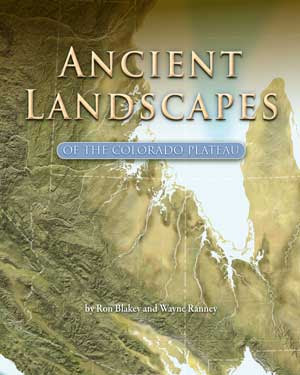
Pre-cambrian rock exposure at Bradgate Park, Leicestershire.
(Photo: from www.naturalengland.co.uk)
There are indeed rocks of pre-cambrian age in the Charnwood Forest area and they are volcanic in origin. Back in the early Palaeozoic, this area formed part of the southern fringe of a continent of which Scandinavia and northern Scotland also formed a part. Volcanic eruptions occurred over a prolonged period from a major crater that is now located near to High Sharpley. Other smaller vents surrounding the main volcano also contributed. Material ejected from the volcano was deposited around the crater for several kilometres with a high proportion carried in the wind in a southerly direction.
There was a great amount of variation in the size of volcanic material produced, which lead to the formation of the agglomerates, tuffs and ashes evident in the exposures seen at Beacon Hill. (See map).
As the period of vulcanism subsided, grading and sedimentation occurred on the sides of the volcano, leading to large areas of conglomerates, overlain by volcanic mudstones. This series of rocks is called 'The Brand Series' and are particularly evident in the western parts of the region as outcrops such as the 'Hanging Stones' beneath Beacon Hill, Billa Barra and Groby.
After the period of volcanic activity, the mid Palaeozoic period saw uplift and folding and the creation of a huge anticline. The numerous faults that were thus created allowed igneous intrusions to form through them which are now seen as the syenite outcrops at Groby, the 'Altar Stones' at Markfield and Cliffe Hill.
Apparently, the dome at Charnwood would have been several thousand feet higher than it now is while its base would have been over a thousand feet lower than its present elevation due to the continuous erosion, stripping rocks from the exposed surfaces, filling the surrounding valleys with the eroded material.
Following this we entered the carboniferous period with the surrounding valleys being swamps and shallow marine environments. The Triassic period saw Charnwood buried beneath dry desert clay-sands ultimately forming marls. The impermeable nature of marls thus allowed shallow lakes to form. The Cenozoic saw further erosion in the tropical environment and the following glacial periods of the Pleistocene added its own process of 'freeze-thaw' erosion and examples of Charnwood rocks have been found in places some considerable distance from the area due to glacial transportation.
So there you go! An rather brief geological history of Charnwood! That's what I have deduced from a bit of reading and may be somewhat abbreviated and maybe even wrong!?! If there is a 'proper geologist looking in who has spotted any alarming errors, please feel free to correct me! As I have said before in a previous blog, we learn just as much by being told we've got it wrong, as we do when we are being patted on the back! What I need to do now of course, is get out there, see all these outcrops for myself and take some photos! When I do I'll update this blog and post them up!
There has also been an interesting development within the younger members of the family recently! My 16 year old daughter Anna, while revising for her GCSE Geography exam, has been bombarding me with questions about geology and rocks recently and has developed a particular fondness for saying 'slatey cleavage' as often as possible! AND even Aimee who is 11, has been asking me what a glacier is and how it forms! So perhaps they are both gradually beginning to realise that maybe geology AND their step-father aren't quite as boring as they once thought? There's nothing quite like getting outside and 'into the geology' to make it all come alive!
One final thing to note is that the pre-cambrian rocks of Charnwood include within them, fossils of some of the earliest examples of multi-cellular life forms on earth! More on this next time!
Cheers for now!
Alyn.

